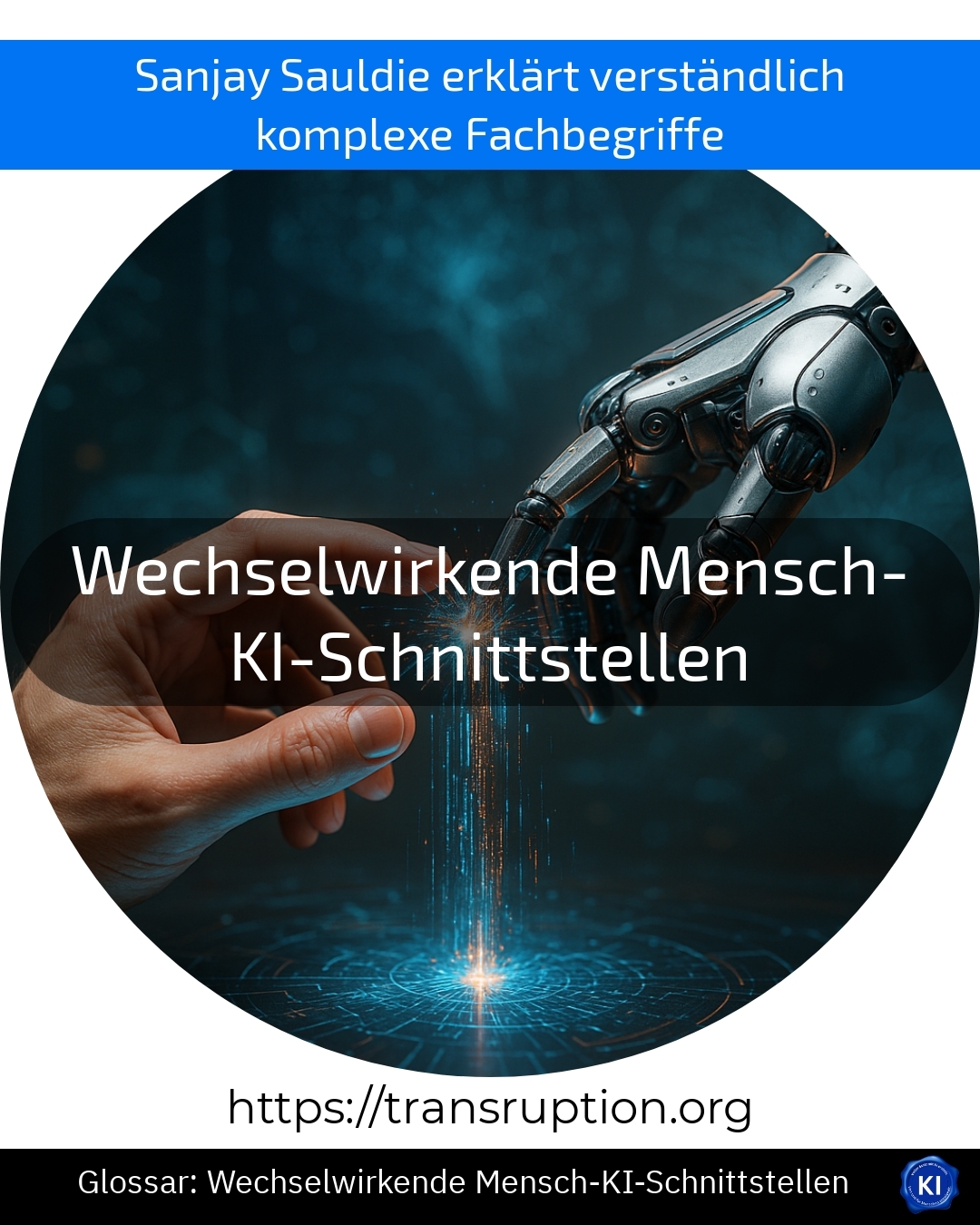The term "interacting human-AI interfaces" originates from the fields of artificial intelligence, digital transformation and Industry and Factory 4.0. It describes digital touchpoints where humans and artificial intelligence (AI) communicate and collaborate directly with each other.
Such interfaces are not just about a human giving commands to the AI, but about both learning from each other and reacting flexibly to each other. The AI adapts to the user's behaviour or wishes and the human can directly influence decisions or processes.
One vivid example is an intelligent assistance system in a factory, where employees work side by side with AI-controlled robots. The robots use sensors to recognise when a person needs help - for example, if a workpiece is heavy - and automatically offer assistance. At the same time, the human can give the robot feedback, such as how the task can be solved better next time.
Interacting human-AI interfaces make collaboration safer, more efficient and more personalised. They are an important building block in making digital technologies easily accessible and usable for everyone.















